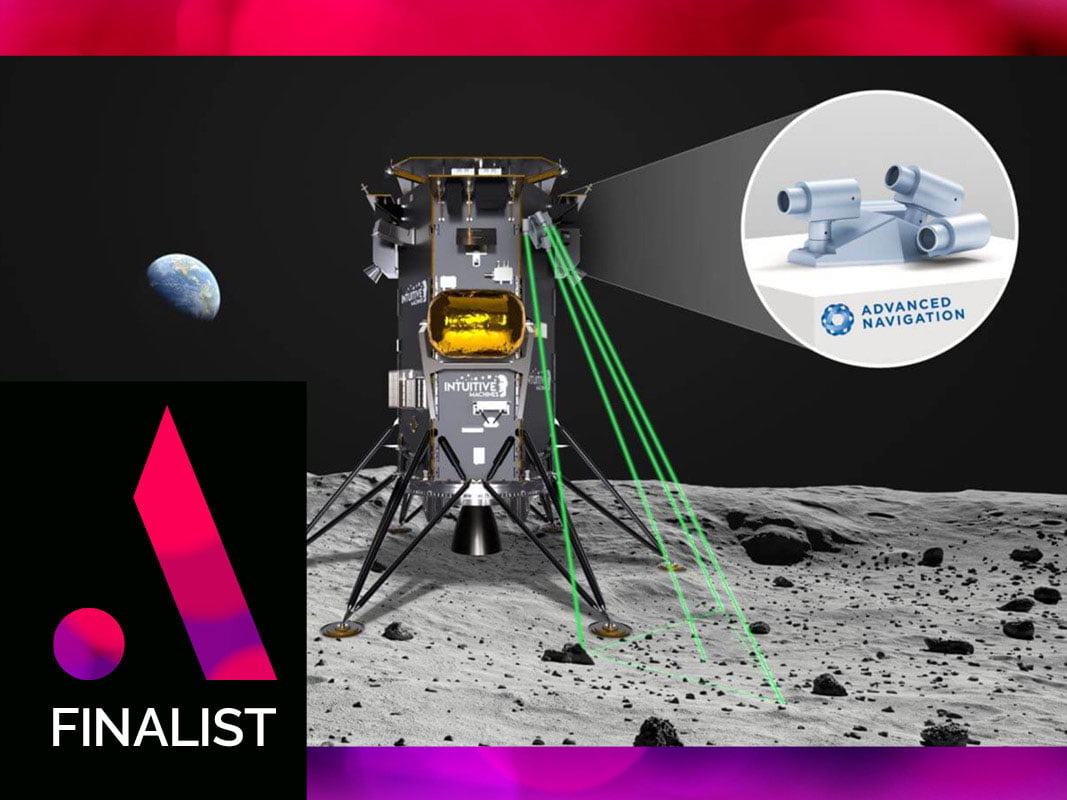Talk to Xavier Orr for any length of time and you’ll soon discover he lives and breathes algorithms and artificial intelligence. In fact, his AI-driven invention – dubbed Hydrus – is a game-changer for underwater drone technology.
Mr Orr is one of the creative forces behind Advanced Navigation, along with his co-founder and co-chief executive Chris Shaw.
Some of their key milestones? The invention of the first AI-based inertial navigation system, release of the first AI sonar system, and release of Hydrus, a revolution in underwater robotics.
“Hydrus, an underwater submersible drone, is helping to restore oceans to a flourishing state. You will find our navigation system in hundreds of Plus AI autonomous trucks, delivering goods to global communities. We help farmers adopt autonomous agriculture equipment, and assist in various fields of research,” Mr Orr said.

“Switching to software, our cloud-based drone management platform helps patrol beaches for emergency rescues and shark tracking. Off-planet, we will navigate the next NASA Moon landing to deliver science and technology to the lunar surface,” he said.
“Our navigation and robotic products solve complex real-world challenges across every terrain – earth-bound and beyond, and supply to some of the world’s largest companies, including Airbus, NASA, Boeing, Google, Tesla, Apple, and General Motors.”
For these and other achievements, the company is named a finalist in the InnovationAus 2022 Awards for Excellence, which celebrates excellence in the translation of Australian research into commercial and social impact outcomes.
“Our mission: To be the catalyst of the autonomy revolution,” Mr Orr said. “Ultimately, our work contributes to helping communities achieve a stronger, more sustainable future with safer outcomes.”
That’s a big mission and one the company takes to heart as it’s quickly becoming known as one of the world’s most ambitious innovators in AI robotics, and navigation technology across air, land, sea and space terrains.
“We’re a global company that’s transforming the way automation can be applied to challenges facing society,” Orr says.
Today, the company designs, develops and manufactures a portfolio of products including inertial navigation systems, underwater acoustic technologies, RF technologies and robotic systems.
Culture of ‘discovery and curiosity’
Fast forward to today and the inventive company is on a revved up mission to drive the autonomy revolution, and finding success across its different products, Mr Orr said.
“There are robotic and autonomous platforms that are enabled by our technology that previously weren’t possible. And now, because of our technology, they’re possible.
“We’ve taken that original core IP that was applied to inertial navigation, and then applied it to sonar, and then other fields like radio, and then we’ve also taken some University research and commercialised that into other products, such as fibre optic gyroscopes.
“Then, cumulating with a whole heap of the different technologies we created and putting those into Hydrus, which is our revolutionary underwater vehicle. That’s a real game-changer for the market. It’s a whole new category.
“Previously, underwater vehicles were expensive, difficult to operate. You need specialised training and vessels to deploy them. This is what’s happened with the flying drone market, where you have something that’s affordable, small, easy to use. Anyone can deploy it off the side of a tinny, and away you go.”
To the ‘Moon’ and back
The company now has a mission of another kind – to venture to the moon. It’s lightweight navigation systems will help deliver heavier payloads to the lunar surface to further advance research, exploration and commercial developments with NASA.
In partnership with Intuitive Machines and with the support of the Australian Space Agency – the company is on track to be the first Australian company to reach the Moon.
“NASA and another company called Intuitive Machines are planning to land on the moon for the first time since the 70s,” Mr Orr said. “We have been selected as a technology partner to navigate those systems to the moon with the new AI inertial navigation technology.”
Since 2012, the company has progressed into several deep and new technology fields including: underwater acoustics; GNSS antennas and receivers; radio frequency systems; inertial sensors; robotics; and quantum-enhanced inertial navigation.
“These technologies can be applied to many exciting fields including automotive, marine, subsea, space, aerospace and geospatial. As a result, our competitor landscape is incredibly broad and quite different depending on the product, application and sector.”
So, whether the technology is travelling to the moon, or voyaging underwater, Mr Orr says he always believed autonomous systems were one invention that would forever change the course of human history.
Do you know more? Contact James Riley via Email.
